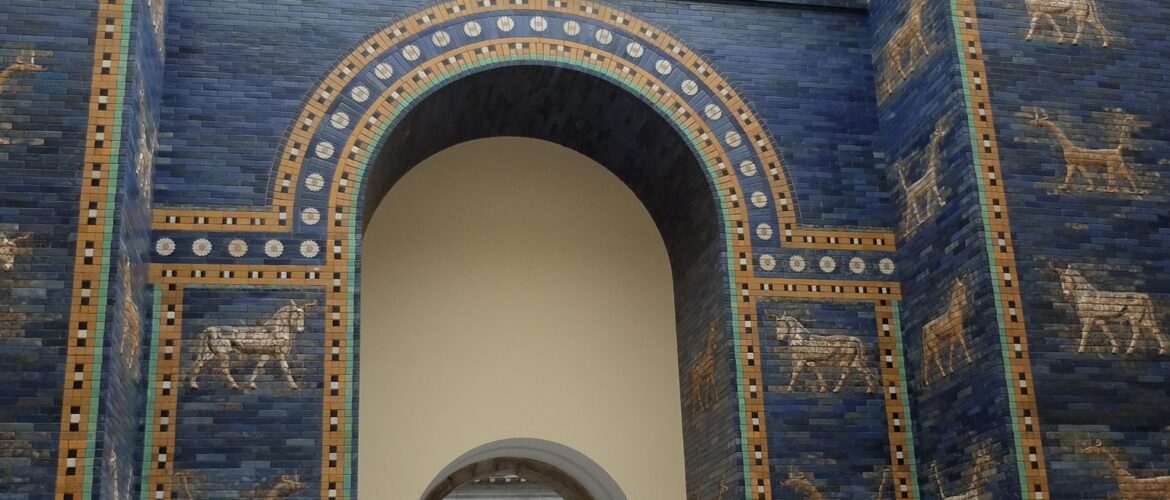The day started a bit late. Steve and Billie slept in – which is actually a pretty good sign. Billie normally gets up at 5:00 am so this is an indication that she is approaching ‘vacation mode’. Anyway, we hurried thru breakfast, missed our window to take the bus and stop by the Babelplatz (the plaza where the Nazi’s (or was it the Nampa School Board) held their famous book-burning rally. There’s a stunning and moving memorial there.
Anyway, we slammed down a quick breakfast, grabbed a cab, and were only 8 minutes late for our small group tour of two of Berlin’s best historical museums (which is saying a lot when you consider that this is a country that spent much of the 19th century appropriating archeological finds from the ancient near east).
The tour was led by an actual working archaeologist who specializes in the ancient near east. Seeing the stuff was really neat, but everything we saw paled in comparison to the way he wove the histories of the various cultures into a narrative that made sense (in a broad overview sort of way) of the sweep of history in that part of the world.
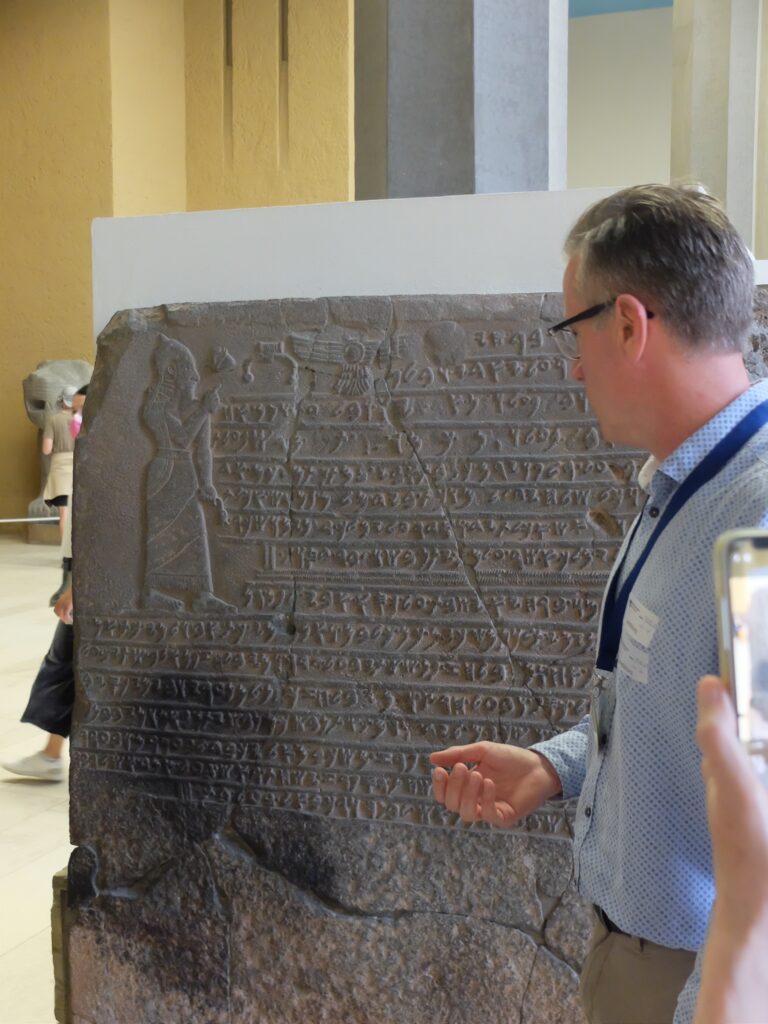
Jamie showed us several examples of ‘god images’ that crossed cultural lines.
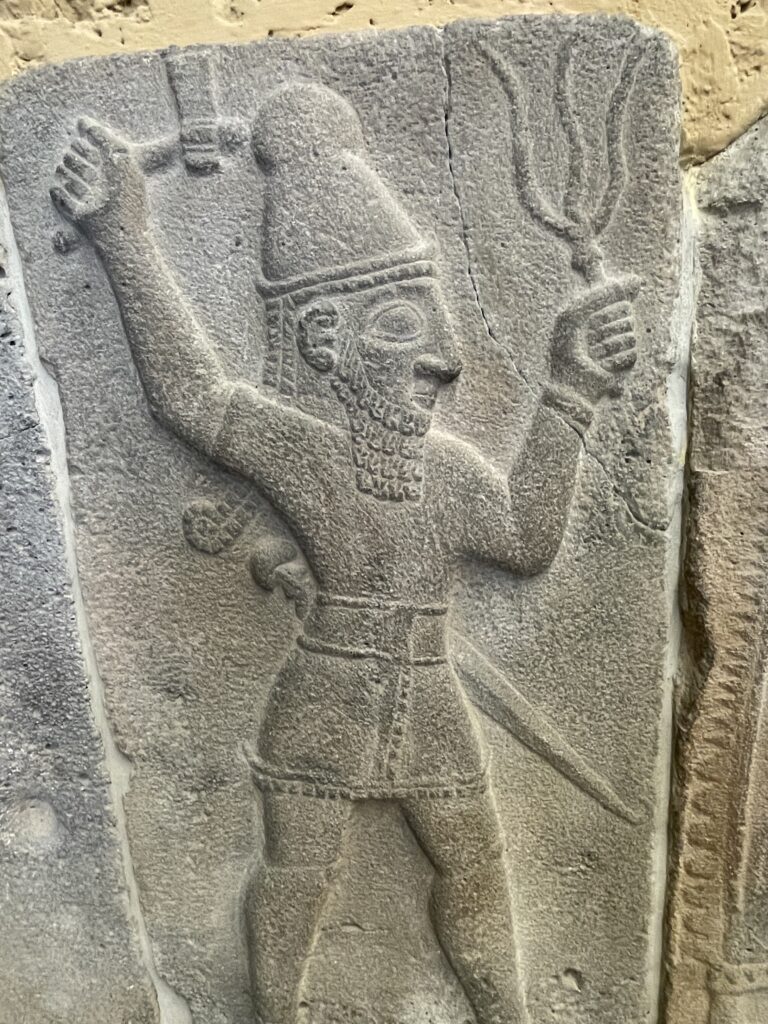
In dealing with local authorities at the time the Germans used the incentive that they would finance the investigation and excavation in return for half of the finds – determined by weight, not by value. So it was always an interesting exercise to get the material back to Germany and permanently in place before the sensation of the finds became news.
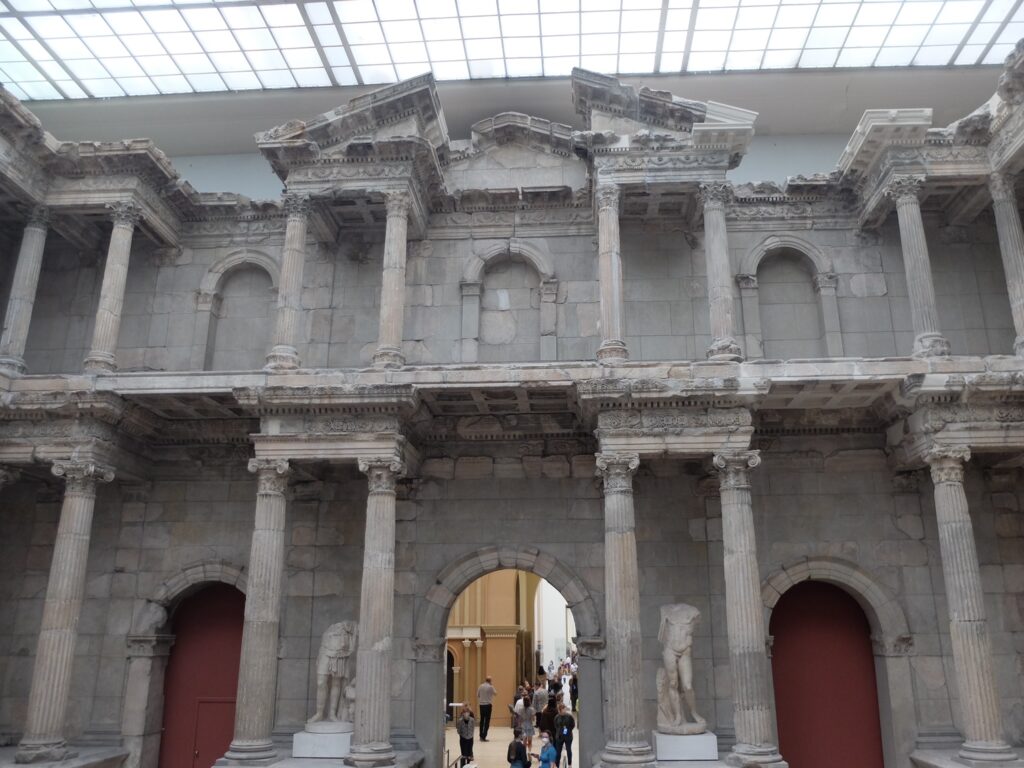
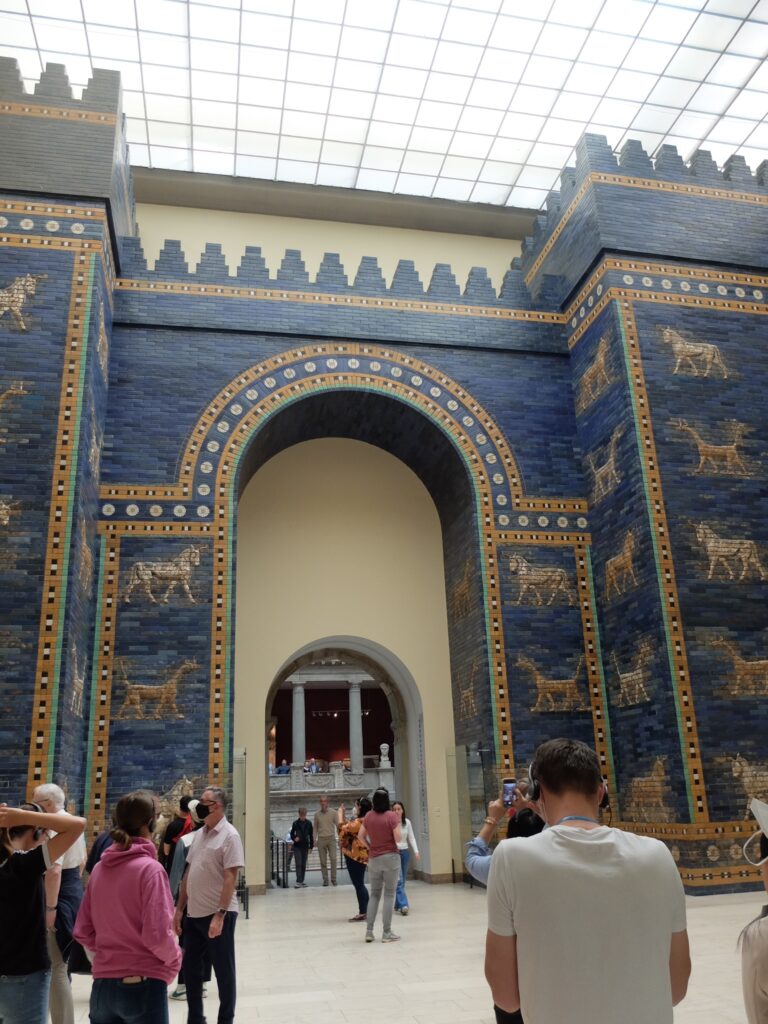
The gate was at the end of a long formal processional way and would have been impressive just because of its size and scale.
It was even more impressive because of the blue brickwork. The bricks are actually mud brick that have been covered with a plaster coating and painted (frescoed?). The color is significant because it mimics the color of lapis-lazuli (the most expensive color of the time).
When the gate was excavated it was not in the condition you see today. Actually much of the structure (except the animals) is reconstruction.
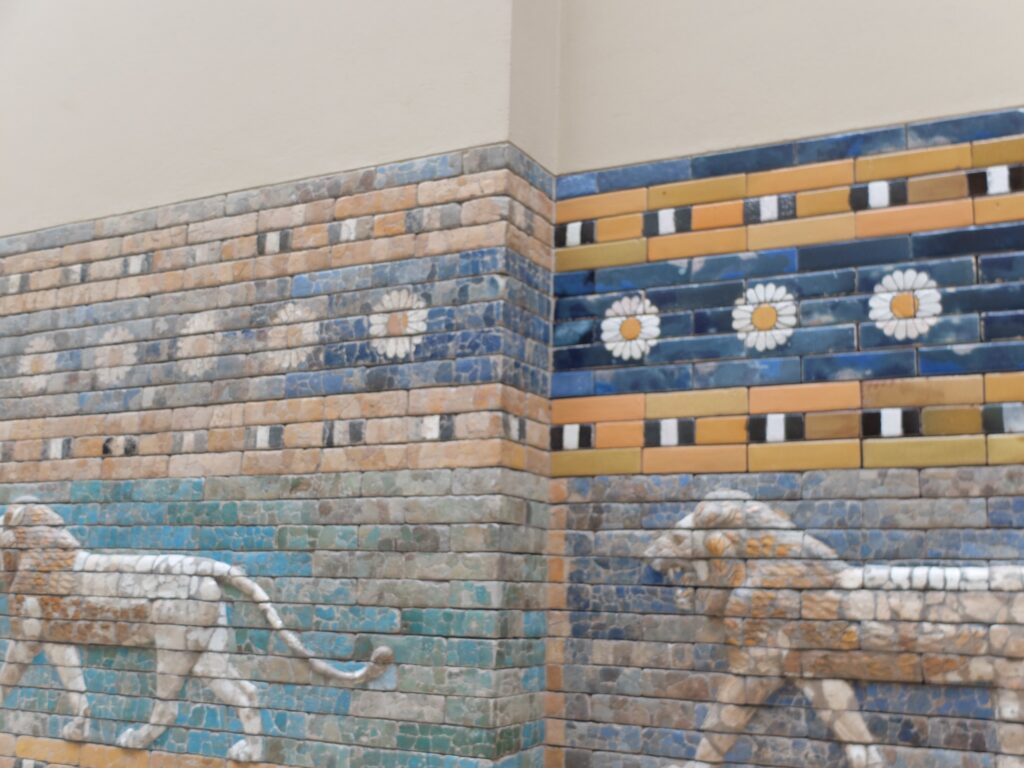
The material actually came back packed in crates such as the one below. It has been (and continues to be) the work of archeologists to piece it back together.
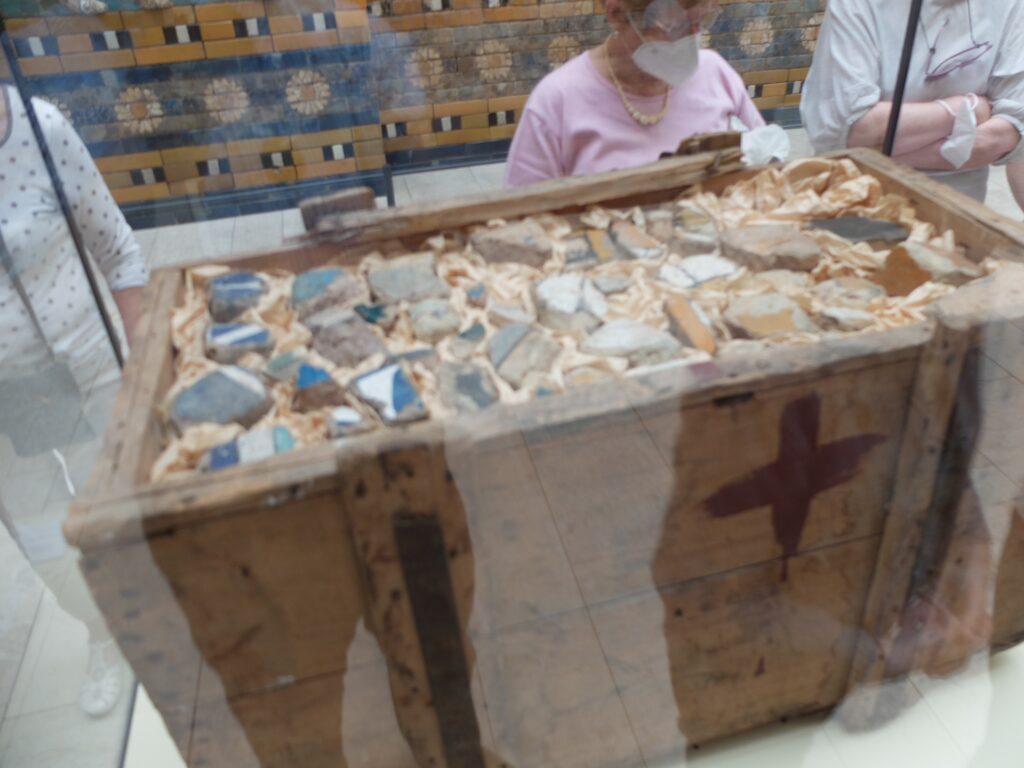
The centerpiece of the museum is the temple from Pergamon, an important city in Ancient Greece. Sadly that section of the museum is currently under renovation so we weren’t able to see it.
So next we were ushered next door to the Altes (old) Museum. Here we learned much about the building itself as well as some of the significant items in the collection.
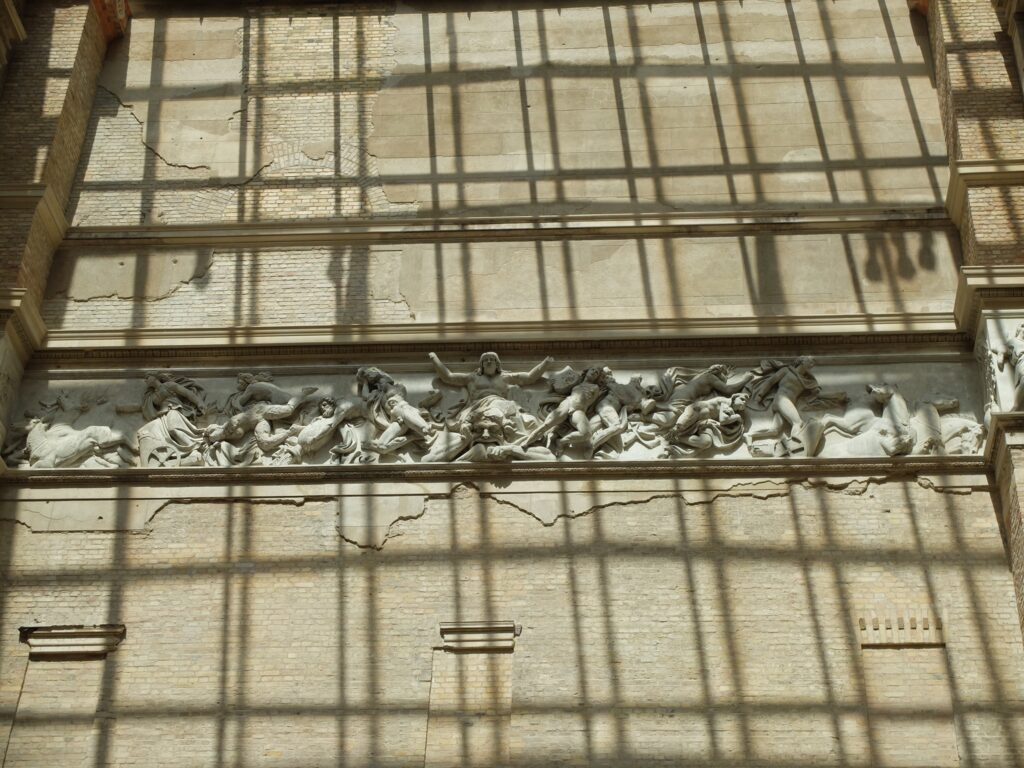
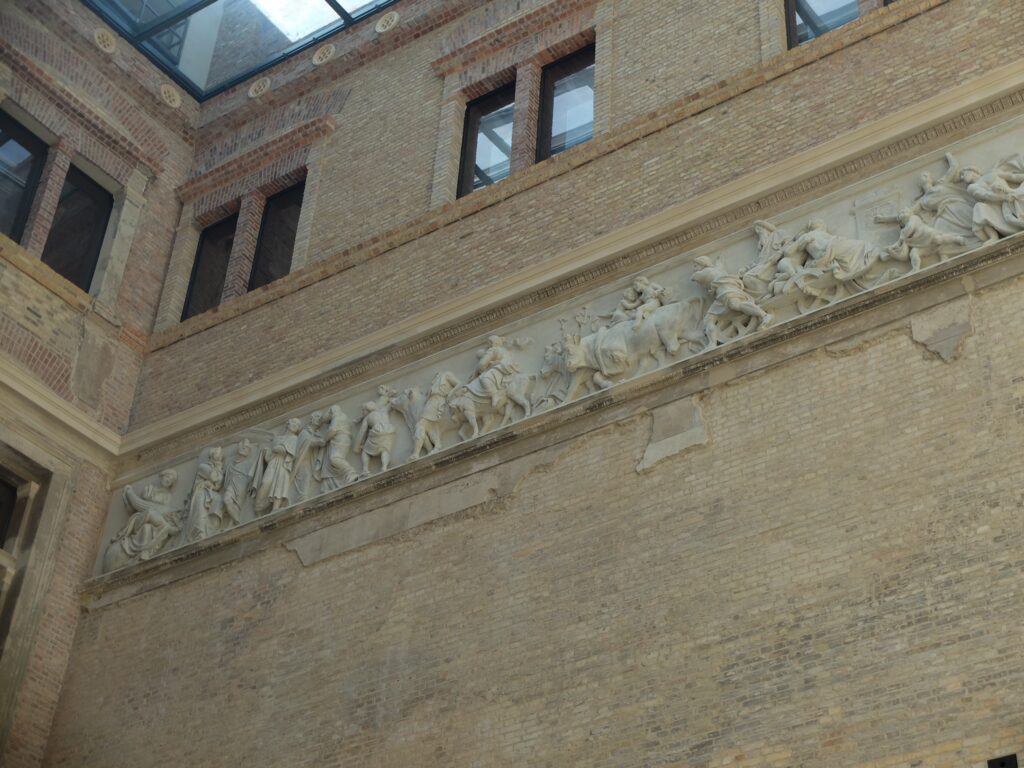
The museum suffered significant damage to allied bombs at the close of WWII. Major reconstruction didn’t begin until after German reunification and while some work continues even to today much damage is retained for its historic value.
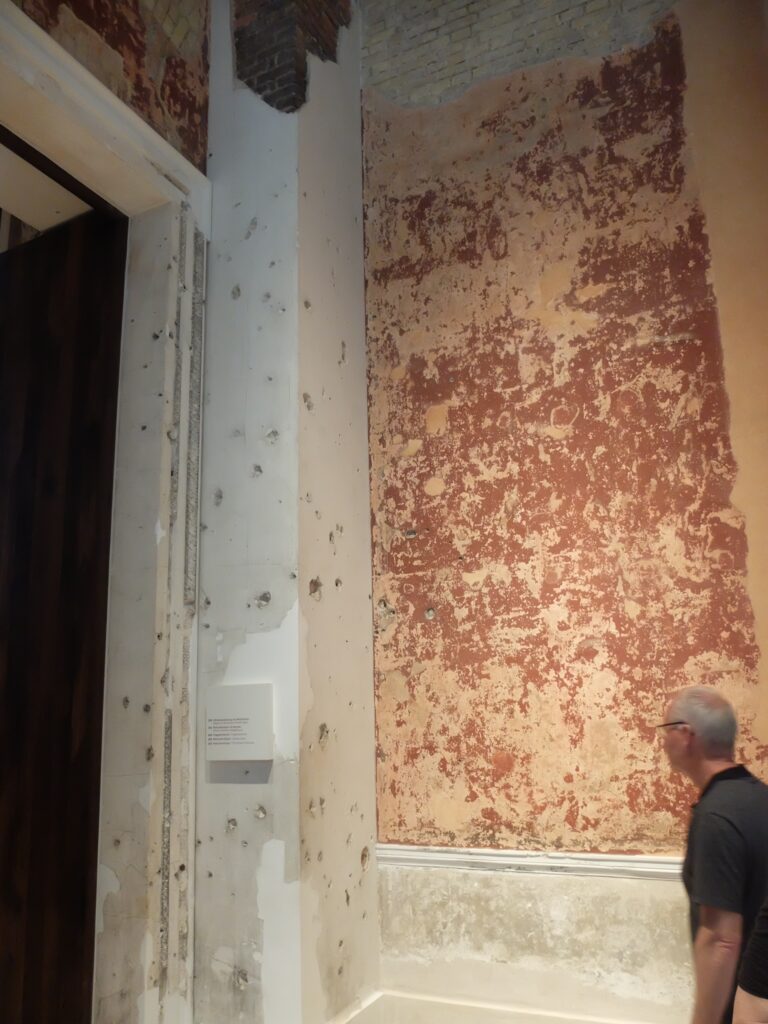
A major feature of the museum is its Egyptian collection.
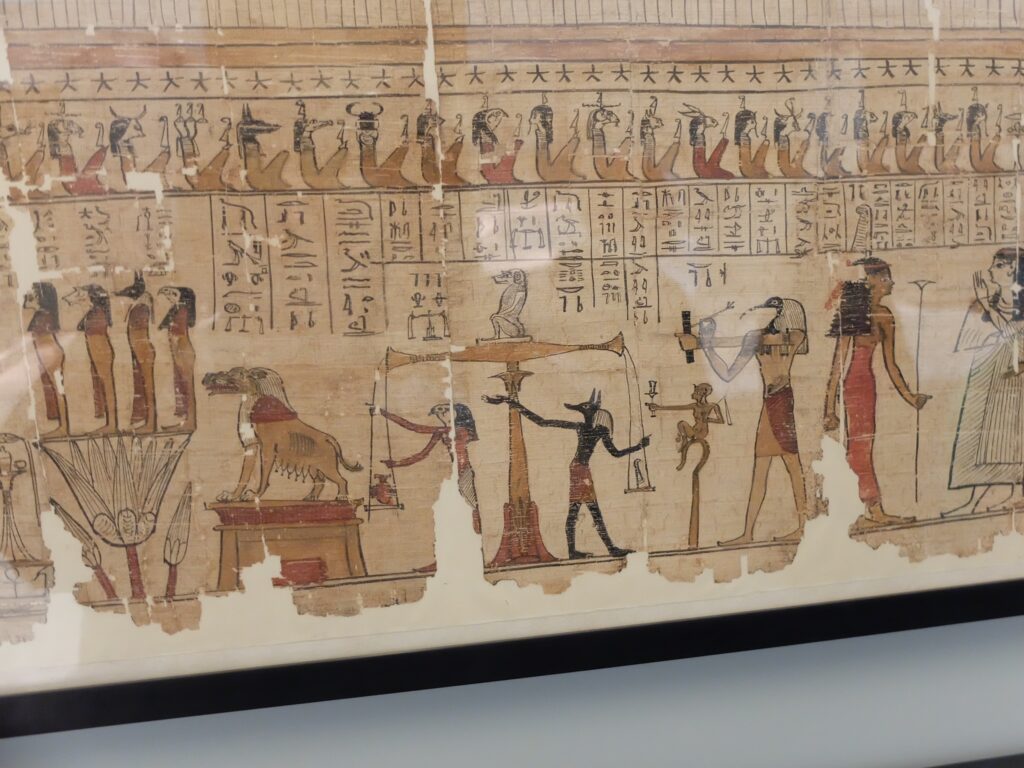
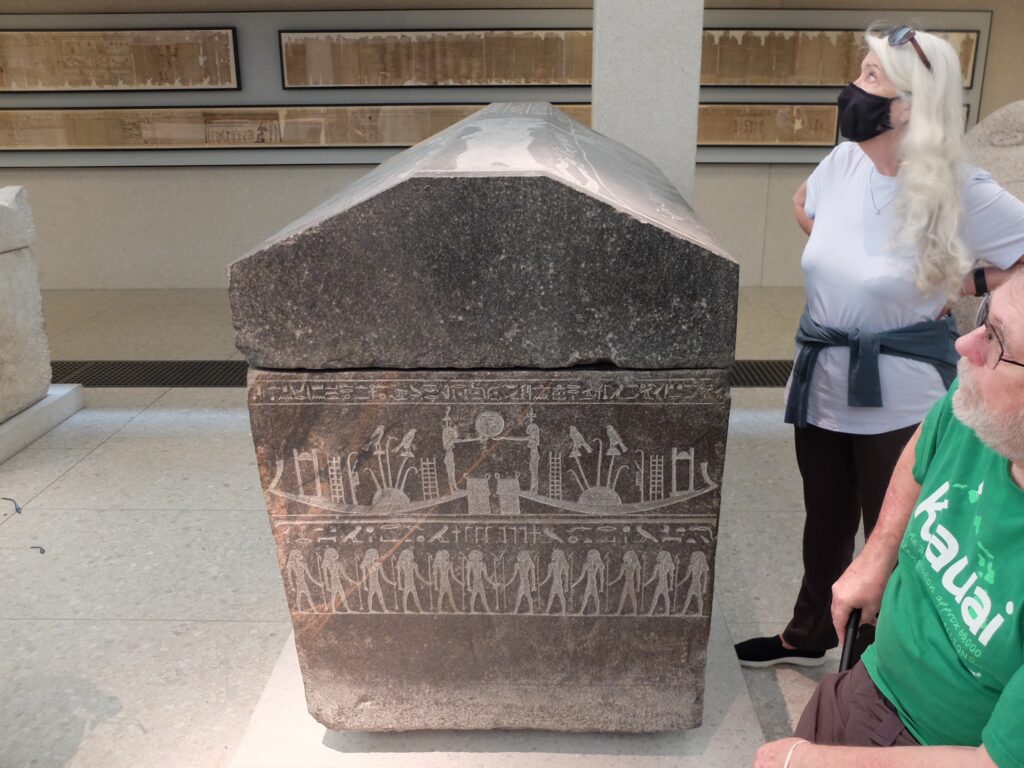
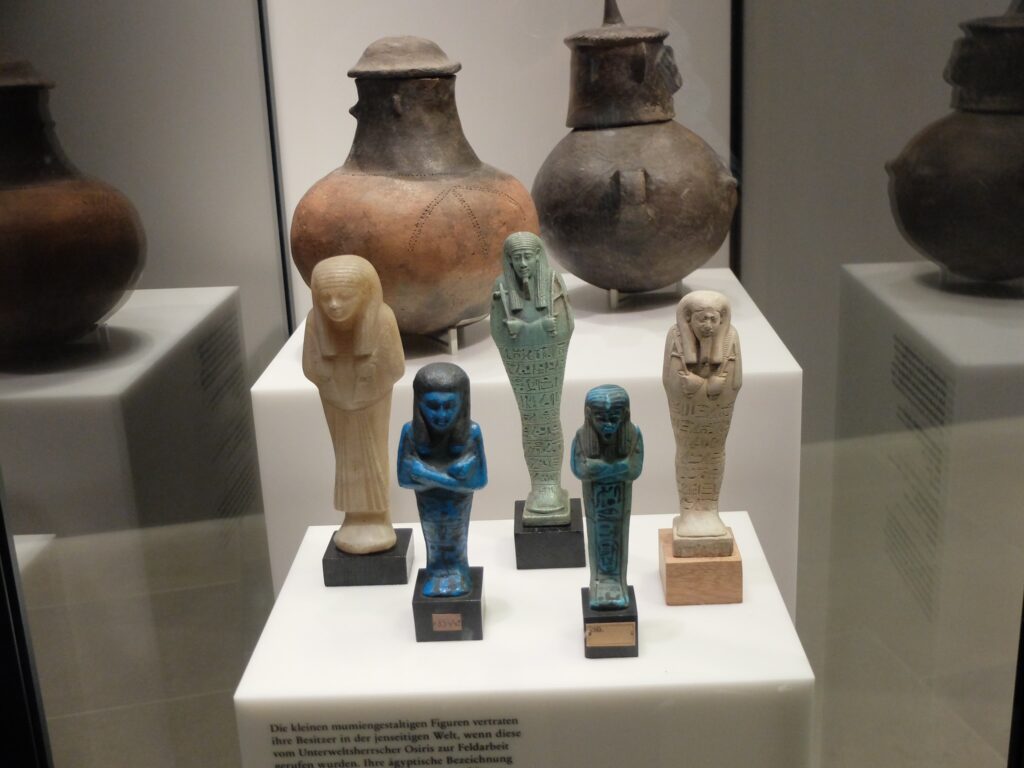
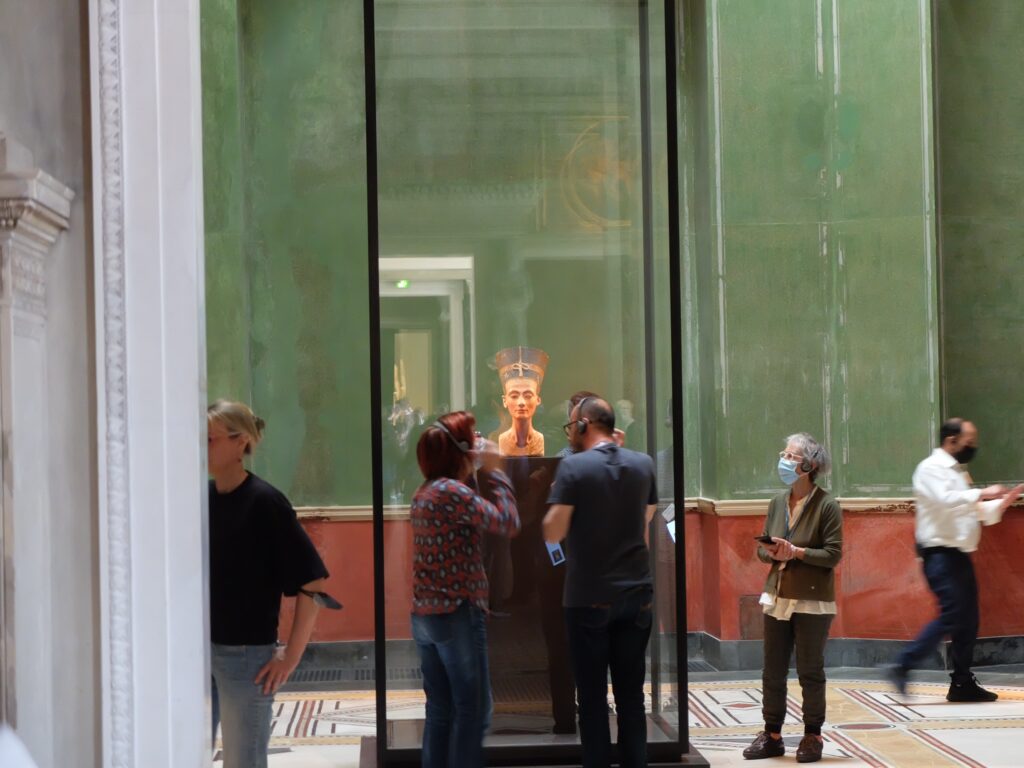
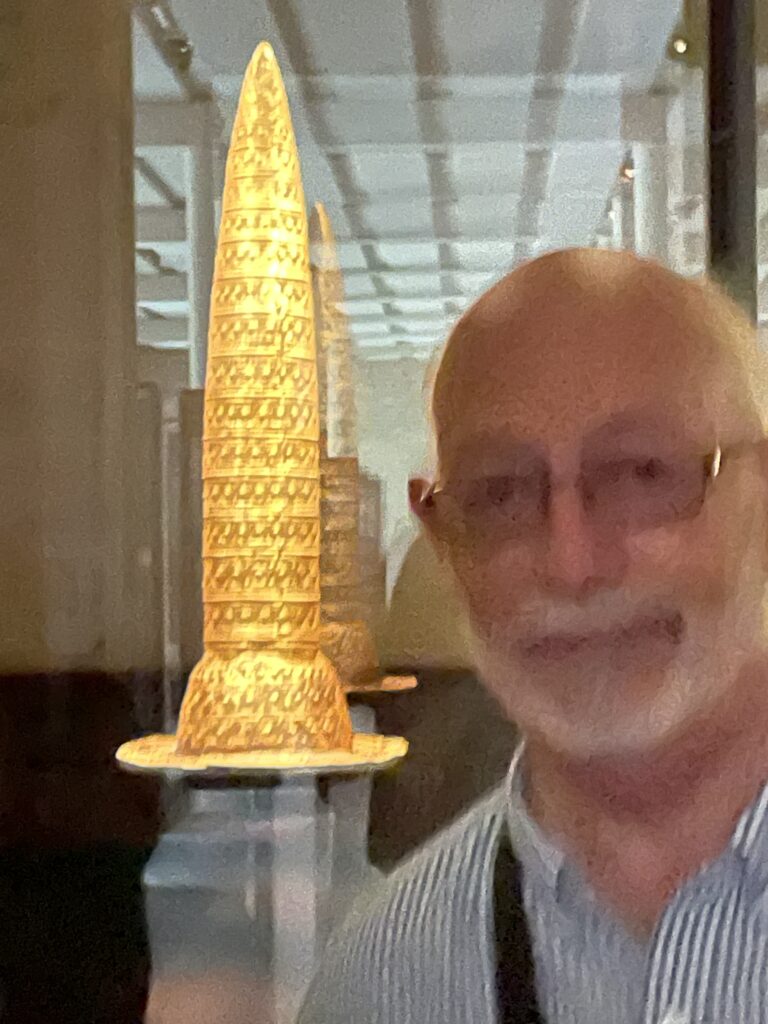
The it was time for lunch.
We said good by and thanks to Jamie and wandered down the street to a Chinese restaurant that he recommended. He was right, the food was great.
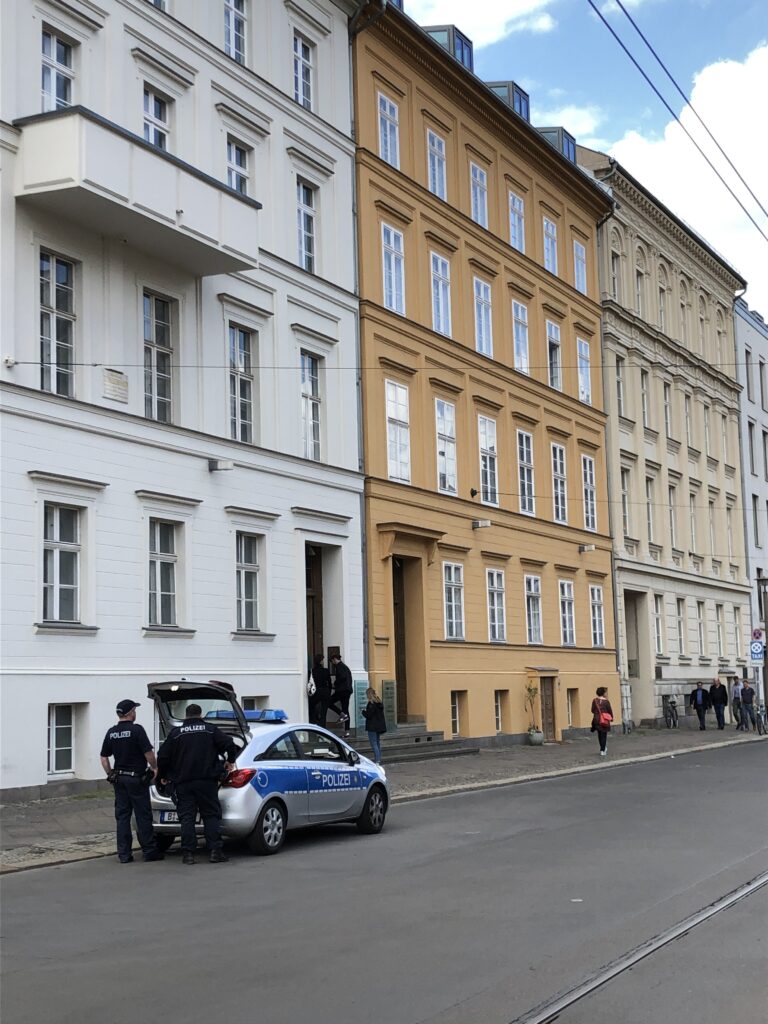
After lunch we made our way, slowly, back to the hotel for a rest before joining Shelds for dinner. They chose one of their favorite neighborhood pubs for tonight.
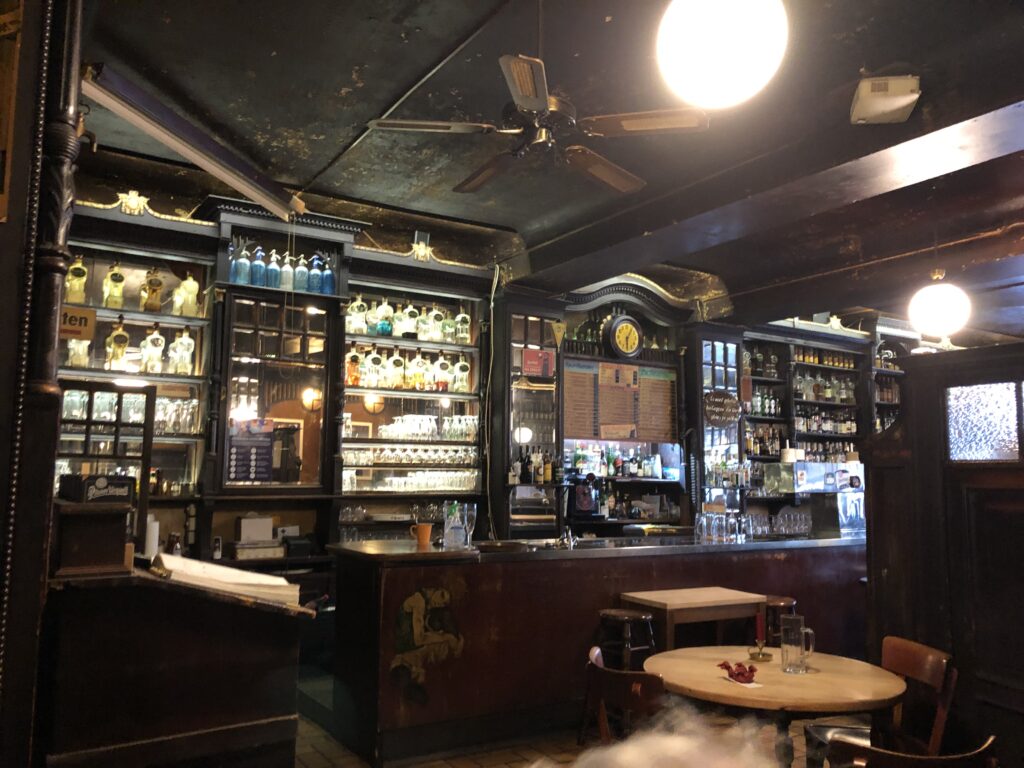
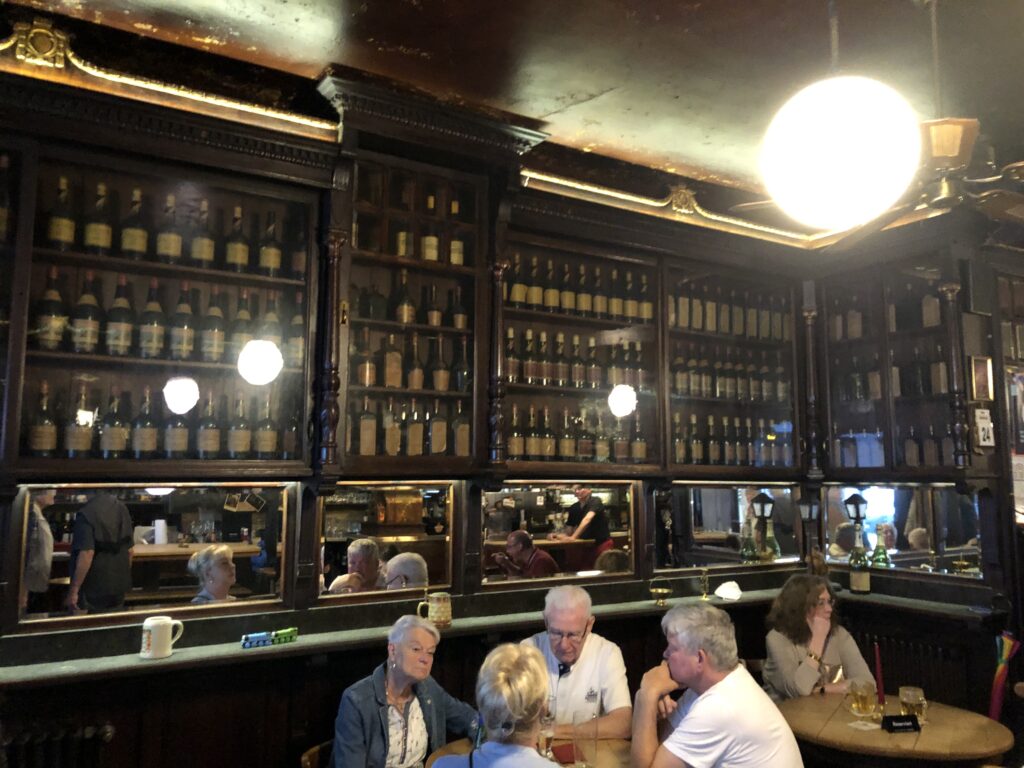
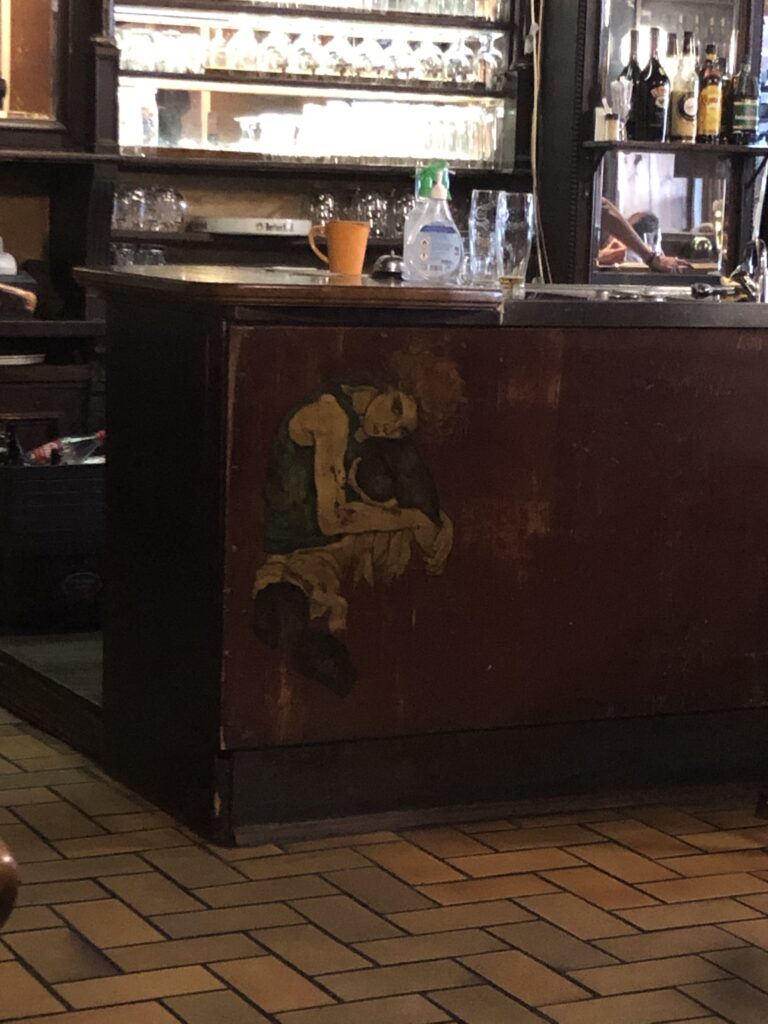
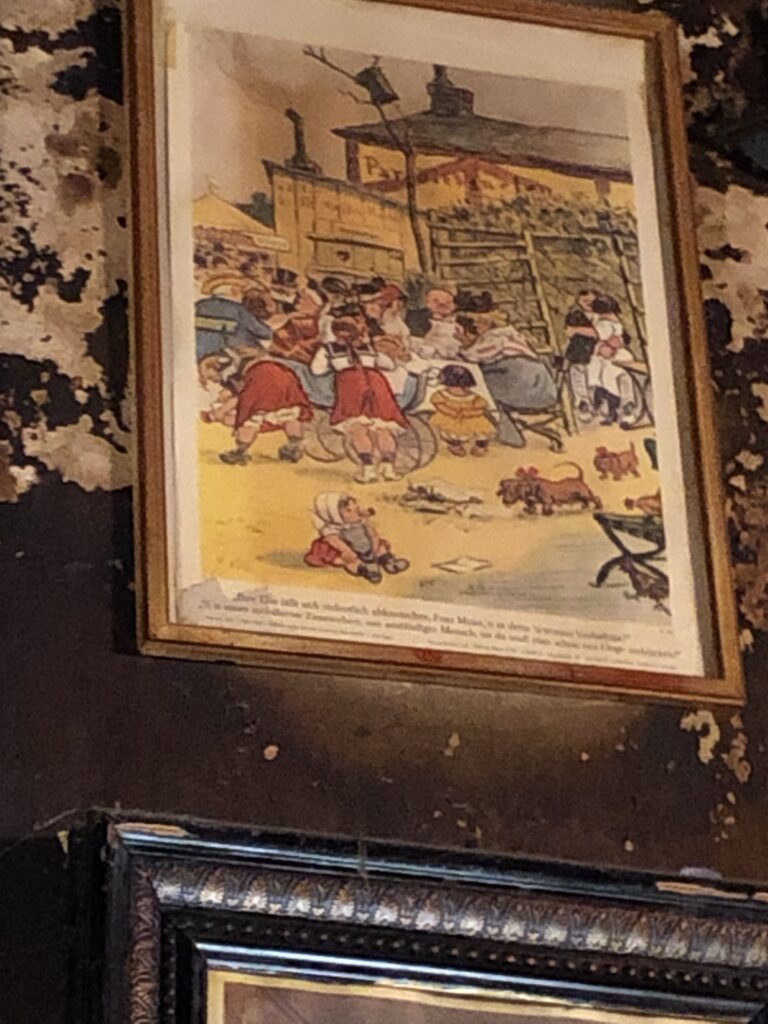
It was a great evening and we really enjoyed one more visit with our good friends from Berlin.
Then it was time to head back to the hotel to pack and such. Tomorrow at a really early hour we head out for a tour that will eventually end up at the boat.
till then…
R
